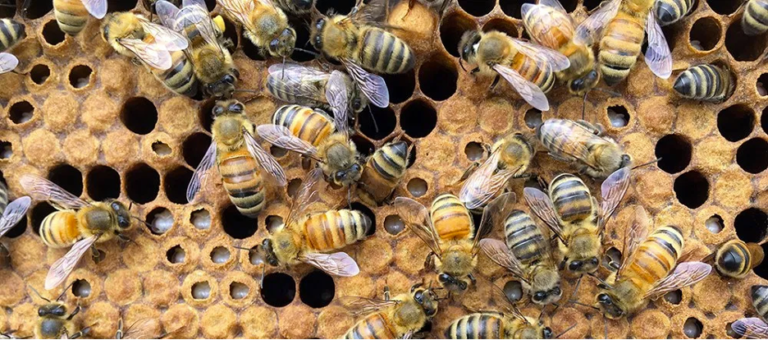Kaira M. Wagoner (1), Jocelyn G. Millar (2), Coby Schal (3) & Olav Rueppell (1)
-
- Biology Department, University of North Carolina at Greensboro, Greensboro, USA.
- Department of Entomology, University of California, Riverside, USA.
- Department of Entomology & Plant Pathology, North Carolina State University, Raleigh, USA.
Abstract
The health of western honey bee (Apis mellifera) colonies is challenged by the parasitic mite Varroa destructor and the numerous harmful pathogens it vectors. Selective breeding for the naturally occurring social immune trait “hygienic behavior” has emerged as one sustainable approach to reducing the mites’ impact on honey bees. To expand our understanding of hygienic triggers and improve hygienic selection tools, we tested the hypothesis that the cuticular compounds (Z)-10-tritriacontene and (Z)-6-pentadecene, previously associated with unhealthy honey bee brood and/or brood targeted for hygiene, are triggers of honey bee hygienic behavior independent of brood health. In support of our hypothesis, application of synthetic (Z)-10-tritriacontene and (Z)-6-pentadecene onto brood and brood cell caps significantly increased hygienic behavior compared to application of similarly structured hydrocarbon controls (Z)-16-dotriacontene and (Z)-7-pentadecene. Furthermore, we demonstrate a significant positive correlation between colony-level hygienic responses to (Z)-10-tritriacontene and the traditional freeze-killed brood assay for selection of hygienic honey bee stocks. These results confirm biological activity of (Z)-6-pentadecene and reveal (Z)-10-tritriacontene as a novel hygiene trigger. They also support development of improved tools for honey bee colony monitoring and hygienic selection, and thus may accelerate development of honey bee stocks with greater resistance to Varroa and associated pathogens.

